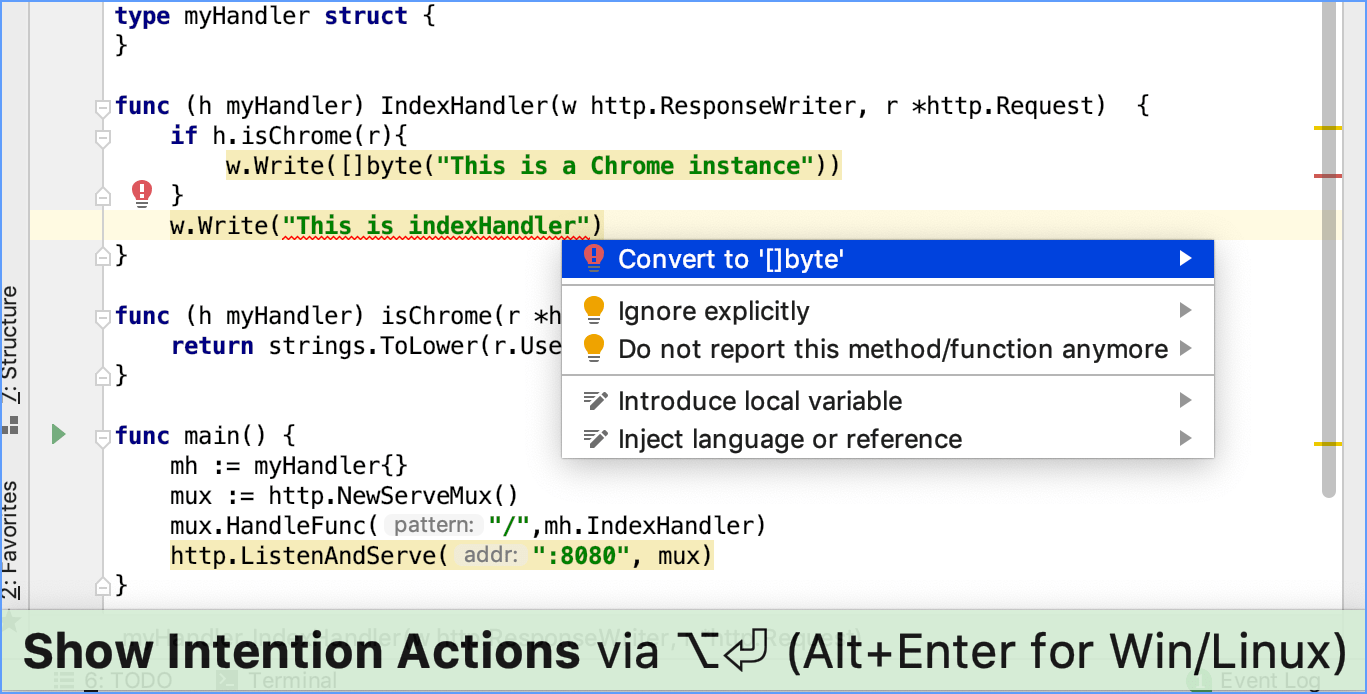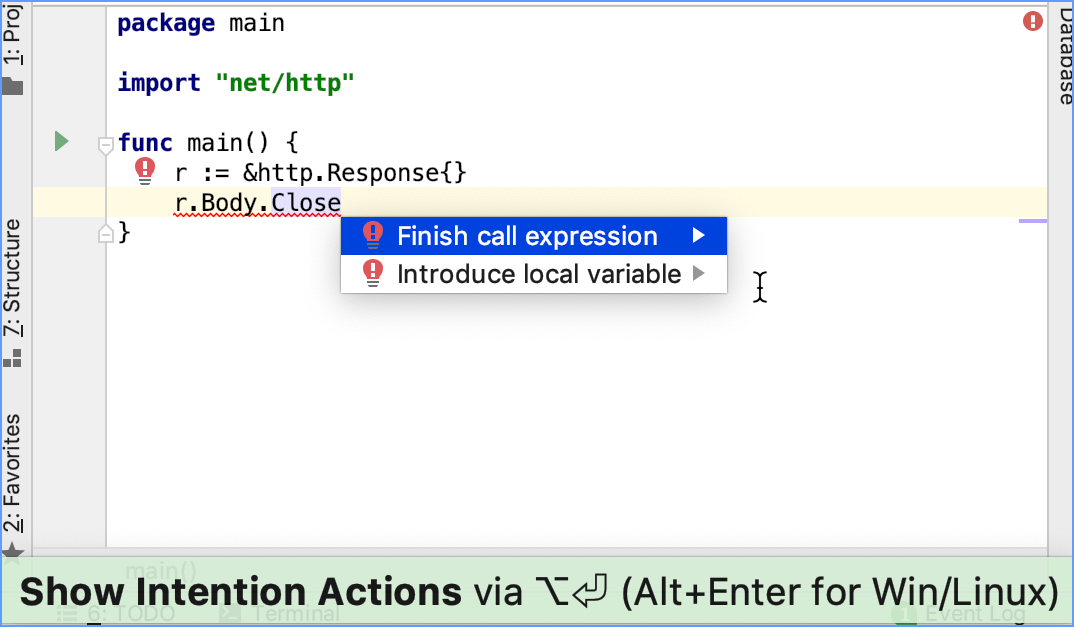Intention actions
Open settings by pressing CtrlAlt0S and navigate to Editor | Intentions.
As you work in the editor, GoLand analyzes your code, searches for ways to optimize it, and detects potential and actual problems. Intention actions cover a wide range of situations from errors and warnings to optimization suggestions.
In GoLand, you can use the following types of intention actions:
Intention actions
: an action that generates a piece of code or suggests an alternative variant for your code. Usually, an intention action is applied to a valid piece of code. By clicking the yellow bulb icon, you can view intention actions available in the current context. For example, you can create a constructor that generates values of a struct type. Or, replace the if-else statement with the equivalent one but with a negated condition and swapped if-else branches.
Quick-fixes
: an action that suggests a solution for a problem in your code. Usually, the intention action is applied to a code that has an error. For example, when you missed brackets at the end of the expression. Or, when you forgot to convert a value to a specific type.
Place the caret at the code element that you want to modify. Then click the light bulb icon (or press AltEnter) to open the list of suggestions.
Intention preview opens automatically. If an intention is complex, and the preview cannot be generated, you will see the intention description. Hover the mouse pointer over available intentions on the suggestion list to preview them.
Press Enter or click an intention on the list to apply it.

You can toggle the preview off and on by pressing Ctrl0Q or by enabling Show preview for intention actions when available in Settings (CtrlAlt0S) | Editor | General | Appearance.
If you want to apply intention actions quicker, you can assign shortcuts to them. Currently, you cannot assign shortcuts to fixes that belong to code inspections.
In the editor, place the caret at the code that triggers the intention action for which you want to assign a shortcut, and click the bulb icon or press AltEnter.
A list of available suggestions opens.
In the list, click
next to the necessary intention and from the menu that opens, select Assign shortcut….

In the dialog that opens, specify the shortcut that you want to use for this action and click OK.
After that you won't need to open the list of suggestions to apply this intention action in the editor; you will be able to do it right away by pressing the configured shortcut.
You can find all your custom intention action shortcuts in settings: press CtrlAlt0S, click Keymap, and locate the Intentions category.
You can view the full list of available intention actions, and disable actions that you don't need at the moment. To open the list of intention actions:
Press CtrlAlt0S to open the IDE settings and then select Editor | Intentions.

For each intention action, you can see a description and an example. To disable an intention, clear the checkbox next to it.
Apply the changes and close the dialog.

Place the caret at the code element that you want to modify. Then click the light bulb icon (or press AltEnter) to open the list of suggestions.
Select the action you want to disable, click the right arrow next to it, and then click Disable <intention action name>.

You can disable the intention action icon and the quick-fix icon
in the editor.
Press CtrlAlt0S to open the IDE settings and then select Editor | General | Appearance.
Disable the Show intention bulb option, apply the changes, and close the dialog.
The Add format string argument intention action generates a placeholder for the expression. The intention action inserts the placeholder into a format string and passes the expression as an argument for the placeholder.
 Gif
Gif
You can perform the following actions with Go declarations by using intention actions:
Add parentheses to declaration
Remove parentheses from declaration
Merge declaration up
Merge declaration up via comma
Merge all declarations
Split declarations into two groups
Split declaration by comma
Split all declarations
 Gif
Gif
When you create a new struct, you can automatically generate field names for it.
Place a caret between braces of a struct.
Press AltEnter.
Select Fill all fields.
Enter field values.

The Convert to the expected type quick-fix AltEnter converts a value to the expected type.

note
Conversion to the expected type is possible only when Go rules permit the value conversion. For more information about conversions in Go, see the official Go documentation.
The Finish call expression quick-fix adds missing brackets and completes the expression.

Thanks for your feedback!